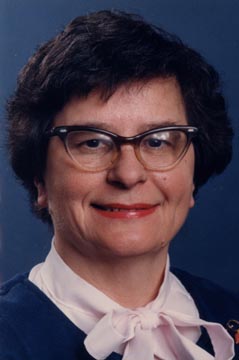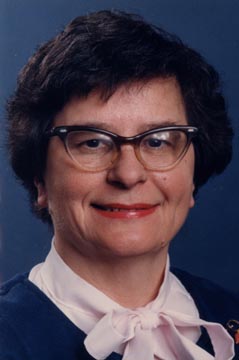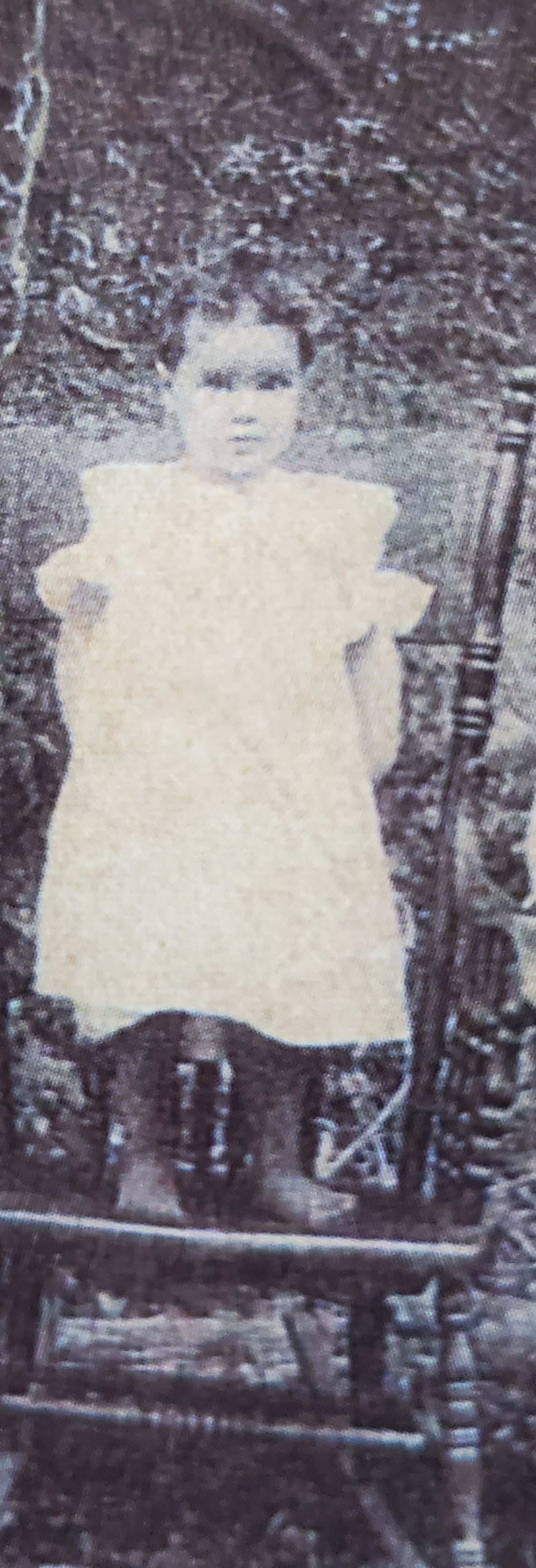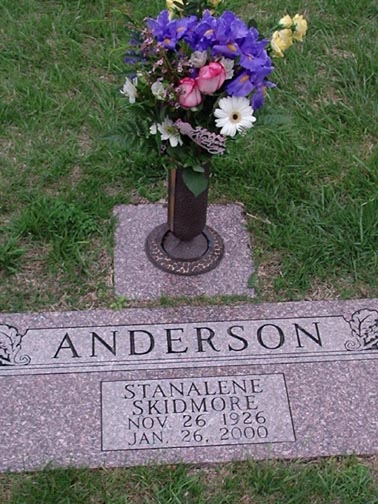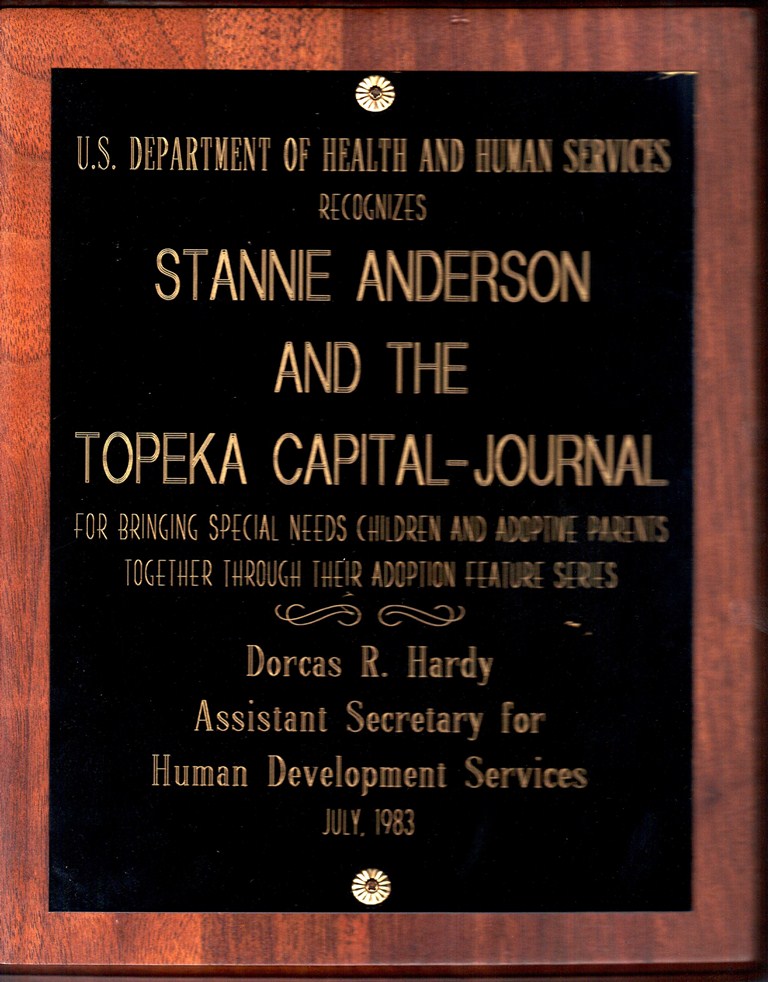****************************************
Former C-J reporter, editor dies
Topeka Capital-Journal, Jan 29, 2000
By NANCY TOMPKINS
and LINDA LAIRD
The Capital-Journal
Stannie Anderson was a talented news reporter who looked life's challenges in the eye and didn't let them stop her.
Anderson, 73, whose career at The Topeka Capital-Journal spanned 33 years, died Wednesday at her home in Burke, Va.
The 4-foot-11-inch reporter and mother of two small boys joined the Topeka newspaper staff in 1958.
While working hard to keep readers informed of medical news in Topeka and establishing herself as an award-winning journalist, she overcame tough challenges in her private life.
They included divorce, later losing a son in his 18th year and winning a battle with breast cancer.
As the paper's medical reporter, Anderson covered Topeka hospitals and a wide spectrum of health news. Her persistence and professionalism won her a solid working relationship with Dr. Karl Menninger, who became a valued friend.
"Dr. Karl was not an easy person to deal with," said Dr. Roy Menninger, a nephew and chairman of trustees at Menninger. "But Stannie was a gracious and elegant person who had a style that was almost ironic for a hard-nosed reporter."
Menninger said Anderson was a delight to talk with and that her interest in the health field was unquenchable.
"She was eager to find an effective way to convey to the outside world all that was necessary for the public to understand what was happening in the health field," he said.
Her reporting focused national attention on migraine headache research started at Menninger in 1967 by Dr. Elmer Green.
"Before Stannie wrote about it, biofeedback and autogenic training was considered just a physiological curiosity," Green said. "She was a consummate reporter and a true skeptic, who had to test everything herself and wanted to interview everyone involved. And she did."
Anderson, who suffered migraines, became a test participant and learned to use biofeedback.
She also covered the Topeka Zoo during its vast improvements and rise to fame led by former zoo director Gary Clarke.
Clarke observed that she was a top-notch journalist, who wrote objectively yet allowed readers to feel the emotion of those in her stories.
"She recognized the value of the zoo to the community," Clarke said. "What she wrote wasn't 'just a story.' "
In the newsroom, she was always in a hurry and focused.
"She was a good person and a kind, compassionate woman," said longtime colleague Don Marker, former Capital-Journal city editor.
Marker praised her ongoing series of stories that sought adoptions for hard-to-place children.
"She took more satisfaction from that than any other thing she was involved in," he said. "As a result of her stories, a lot of kids were placed that otherwise wouldn't have been."
She became city editor of The Topeka State Journal in 1977 and was named assistant city editor of The Capital-Journal in 1978.
Anderson survived breast cancer at age 43, stunning her doctor, who believed her disease to be terminal.
A friend asked what she attributed her survival to.
"Attitude," she replied. "Determination. I had no one to raise my sons. I had to survive."
Anderson once shared her philosophy for facing problems:
"If they tell you there is something you can do to help your situation, then do exactly what they tell you, and say prayers, and then don't worry.
"If they tell you there is nothing you can do, then say prayers for what you need, and trust God, and then don't worry.
"Refuse to worry. It isn't healthy."
A plaque above her home computer read: Expect a Miracle.
Please visit her website:
http://www.stannieanderson.com/
****************************************
Former C-J reporter, editor dies
Topeka Capital-Journal, Jan 29, 2000
By NANCY TOMPKINS
and LINDA LAIRD
The Capital-Journal
Stannie Anderson was a talented news reporter who looked life's challenges in the eye and didn't let them stop her.
Anderson, 73, whose career at The Topeka Capital-Journal spanned 33 years, died Wednesday at her home in Burke, Va.
The 4-foot-11-inch reporter and mother of two small boys joined the Topeka newspaper staff in 1958.
While working hard to keep readers informed of medical news in Topeka and establishing herself as an award-winning journalist, she overcame tough challenges in her private life.
They included divorce, later losing a son in his 18th year and winning a battle with breast cancer.
As the paper's medical reporter, Anderson covered Topeka hospitals and a wide spectrum of health news. Her persistence and professionalism won her a solid working relationship with Dr. Karl Menninger, who became a valued friend.
"Dr. Karl was not an easy person to deal with," said Dr. Roy Menninger, a nephew and chairman of trustees at Menninger. "But Stannie was a gracious and elegant person who had a style that was almost ironic for a hard-nosed reporter."
Menninger said Anderson was a delight to talk with and that her interest in the health field was unquenchable.
"She was eager to find an effective way to convey to the outside world all that was necessary for the public to understand what was happening in the health field," he said.
Her reporting focused national attention on migraine headache research started at Menninger in 1967 by Dr. Elmer Green.
"Before Stannie wrote about it, biofeedback and autogenic training was considered just a physiological curiosity," Green said. "She was a consummate reporter and a true skeptic, who had to test everything herself and wanted to interview everyone involved. And she did."
Anderson, who suffered migraines, became a test participant and learned to use biofeedback.
She also covered the Topeka Zoo during its vast improvements and rise to fame led by former zoo director Gary Clarke.
Clarke observed that she was a top-notch journalist, who wrote objectively yet allowed readers to feel the emotion of those in her stories.
"She recognized the value of the zoo to the community," Clarke said. "What she wrote wasn't 'just a story.' "
In the newsroom, she was always in a hurry and focused.
"She was a good person and a kind, compassionate woman," said longtime colleague Don Marker, former Capital-Journal city editor.
Marker praised her ongoing series of stories that sought adoptions for hard-to-place children.
"She took more satisfaction from that than any other thing she was involved in," he said. "As a result of her stories, a lot of kids were placed that otherwise wouldn't have been."
She became city editor of The Topeka State Journal in 1977 and was named assistant city editor of The Capital-Journal in 1978.
Anderson survived breast cancer at age 43, stunning her doctor, who believed her disease to be terminal.
A friend asked what she attributed her survival to.
"Attitude," she replied. "Determination. I had no one to raise my sons. I had to survive."
Anderson once shared her philosophy for facing problems:
"If they tell you there is something you can do to help your situation, then do exactly what they tell you, and say prayers, and then don't worry.
"If they tell you there is nothing you can do, then say prayers for what you need, and trust God, and then don't worry.
"Refuse to worry. It isn't healthy."
A plaque above her home computer read: Expect a Miracle.
Please visit her website:
http://www.stannieanderson.com/
Family Members
Sponsored by Ancestry
Advertisement
Advertisement
